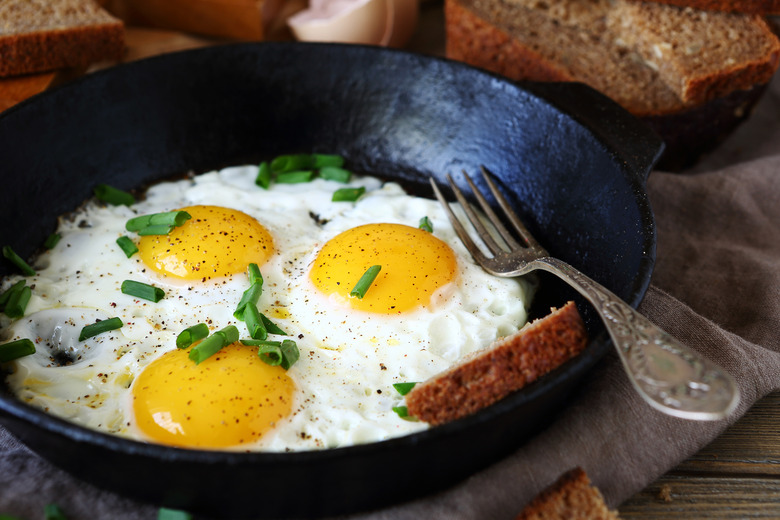What Are Some Characteristics Of Protein?
Proteins are large, complex molecules that have a variety of functions in the body and are essential to good health. Like fats and carbohydrates, proteins are long polymer chains. They are made from amino acids and are used by organisms to build structures, facilitate chemical processes and give an animal locomotion.
Amino Acids
Amino Acids
Proteins are made of long strings of amino acids, which are often called the "building blocks of life." Amino acids are chemicals that consist of a carbon atom that is attached to a hydrogen atom, an amine group (a nitrogen atom bonded with two hydrogen atoms) and an acid group (a carbon atom double bonded to an oxygen atom as well as single bonded to an oxygen atom that is also bonded to a hydrogen atom). Each amino acid contains another group known as the R group, which has its own unique hydrocarbon structure. There are 20 amino acids that are essential to bodily functions, eight of which cannot be manufactured by the human body. This is why proteins are so important to a person's diet.
Size
Size
When two amino acids come together, they form a peptide bond. When only a few amino acids attach to each other, it is just a small peptide chain. However, like links in a chain, many different amino acids can link together to form an extremely large chain, which is a protein. All proteins are formed from a long chain of amino acid, which can number in the thousands of units.
Structure
Structure
The sequence of amino acids in a protein determines its shape, which in turn determines its function. The raw sequence of amino acids is known as its primary structure. However, when a molecule is as large as proteins tend to be, it will interact with itself to take on a specific shape. The hydrogen atoms in the molecule form hydrogen bonds with other parts of the molecule, giving rise to a physical form. Some proteins, like those in hair, are known as fibrous proteins because they form long strands that twist among themselves. Others, like enzymes, tend to form individual blobs and are called globular proteins. Further shape comes from the tertiary structure, which is the form the molecule takes when the attractive and repulsive forces from different regions of the molecule balance out.
Denaturing
Denaturing
The structure, and ultimately the function, of a protein molecule can be disrupted in several ways. A change in acidity, high temperatures, some solvents and even the presence of other molecules can alter the forces and bonds of a protein. When this happens, a protein is said to "denature." An example of this is when an egg is put on a hot frying pan, the protein in the clear egg whites turns a solid white. Because the shape of a protein determines its biological function, denaturing a protein can alter or completely destroy its ability to do its job.
Strength
Strength
While different proteins have different properties, in general they can be extremely strong. This makes them ideal for structural elements in organisms. Muscles, bones, hair and connective tissue contain strong proteins to form the structure of a living body.
Stored Energy
Stored Energy
Like carbohydrates and fats, proteins can be metabolized by organisms for their stored energy. In fact, an average person uses protein for approximately 20 percent of daily calories. Some diets rely on high levels of protein as an energy source rather than carbohydrates and sometimes fats. Outside of the body, given the proper moisture conditions, proteins can burn, as is apparent any time a hot dog or steak is left on the grill for too long.
Biological Processes
Biological Processes
Proteins are essential to life functions. They have multiple uses in the body, including enzymes (which make biological processes react faster), hormones (which control the body's processes) and antibodies (which protect organisms from disease). Proteins also are used by the body to transport materials in cells and provide structure. Foods high in protein include meat, fish, milk and eggs, all of which come from animal sources. Vegetarians and vegans need to monitor their food intake to ensure they get all the essential amino acids because individual vegetables high in proteins do not contain all the essential amino acids in one food source.
Cite This Article
MLA
Carr, Kevin. "What Are Some Characteristics Of Protein?" sciencing.com, https://www.sciencing.com/characteristics-protein-8460468/. 13 March 2018.
APA
Carr, Kevin. (2018, March 13). What Are Some Characteristics Of Protein?. sciencing.com. Retrieved from https://www.sciencing.com/characteristics-protein-8460468/
Chicago
Carr, Kevin. What Are Some Characteristics Of Protein? last modified March 24, 2022. https://www.sciencing.com/characteristics-protein-8460468/
